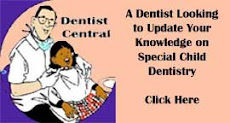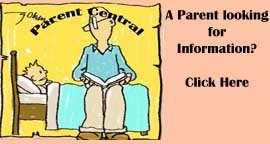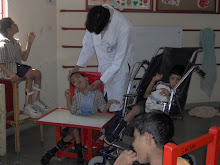The principal characteristics of ADHD are inattention, hyperactivity, and impulsivity. These symptoms appear early in a child’s life. Because many normal children may have these symptoms, but at a low level, or the symptoms may be caused by another disorder, it is important that the child receive a thorough examination and appropriate diagnosis by a well-qualified professional.
Symptoms of ADHD will appear over the course of many months, often with the symptoms of impulsiveness and hyperactivity preceding those of inattention, which may not emerge for a year or more. Different symptoms may appear in different settings, depending on the demands the situation may pose for the child’s self-control. A child who “can’t sit still” or is otherwise disruptive will be noticeable in school, but the inattentive daydreamer may be overlooked. The impulsive child who acts before thinking may be considered just a “discipline problem,” while the child who is passive or sluggish may be viewed as merely unmotivated. Yet both may have different types of ADHD. All children are sometimes restless, sometimes act without thinking, sometimes daydream the time away. When the child’s hyperactivity, distractibility, poor concentration, or impulsivity begin to affect performance in school, social relationships with other children, or behavior at home, ADHD may be suspected. But because the symptoms vary so much across settings, ADHD is not easy to diagnose. This is especially true when inattentiveness is the primary symptom.
DSM-IV Criteria for ADHD
I. Either A or B:
Six or more of the following symptoms of inattention have been present for at least 6 months to a point that is disruptive and inappropriate for developmental level:
Inattention
Often does not give close attention to details or makes careless mistakes in schoolwork, work, or other activities.
Often has trouble keeping attention on tasks or play activities.
Often does not seem to listen when spoken to directly.
Often does not follow instructions and fails to finish schoolwork, chores, or duties in the workplace (not due to oppositional behavior or failure to understand instructions).
Often has trouble organizing activities.
Often avoids, dislikes, or doesn't want to do things that take a lot of mental effort for a long period of time (such as schoolwork or homework).
Often loses things needed for tasks and activities (e.g. toys, school assignments, pencils, books, or tools).
Is often easily distracted.
Is often forgetful in daily activities.
Six or more of the following symptoms of hyperactivity-impulsivity have been present for at least 6 months to an extent that is disruptive and inappropriate for developmental level:
Hyperactivity
Often fidgets with hands or feet or squirms in seat.
Often gets up from seat when remaining in seat is expected.
Often runs about or climbs when and where it is not appropriate (adolescents or adults may feel very restless).
Often has trouble playing or enjoying leisure activities quietly.
Is often "on the go" or often acts as if "driven by a motor".
Often talks excessively.
Impulsivity
Often blurts out answers before questions have been finished.
Often has trouble waiting one's turn.
Often interrupts or intrudes on others (e.g., butts into conversations or games).
Some symptoms that cause impairment were present before age 7 years.
Some impairment from the symptoms is present in two or more settings (e.g. at school/work and at home).
There must be clear evidence of significant impairment in social, school, or work functioning.
The symptoms do not happen only during the course of a Pervasive Developmental Disorder, Schizophrenia, or other Psychotic Disorder. The symptoms are not better accounted for by another mental disorder (e.g. Mood Disorder, Anxiety Disorder, Dissociative Disorder, or a Personality Disorder).
Based on these criteria, three types of ADHD are identified:
ADHD, Combined Type: if both criteria 1A and 1B are met for the past 6 months
ADHD, Predominantly Inattentive Type: if criterion 1A is met but criterion 1B is not met for the past six months
ADHD, Predominantly Hyperactive-Impulsive Type: if Criterion 1B is met but Criterion 1A is not met for the past six months.
American Psychiatric Association: Diagnostic and Statistical Manual of Mental Disorders, Fourth Edition, Text Revision. Washington, DC, American Psychiatric Association, 2000.








No comments:
Post a Comment